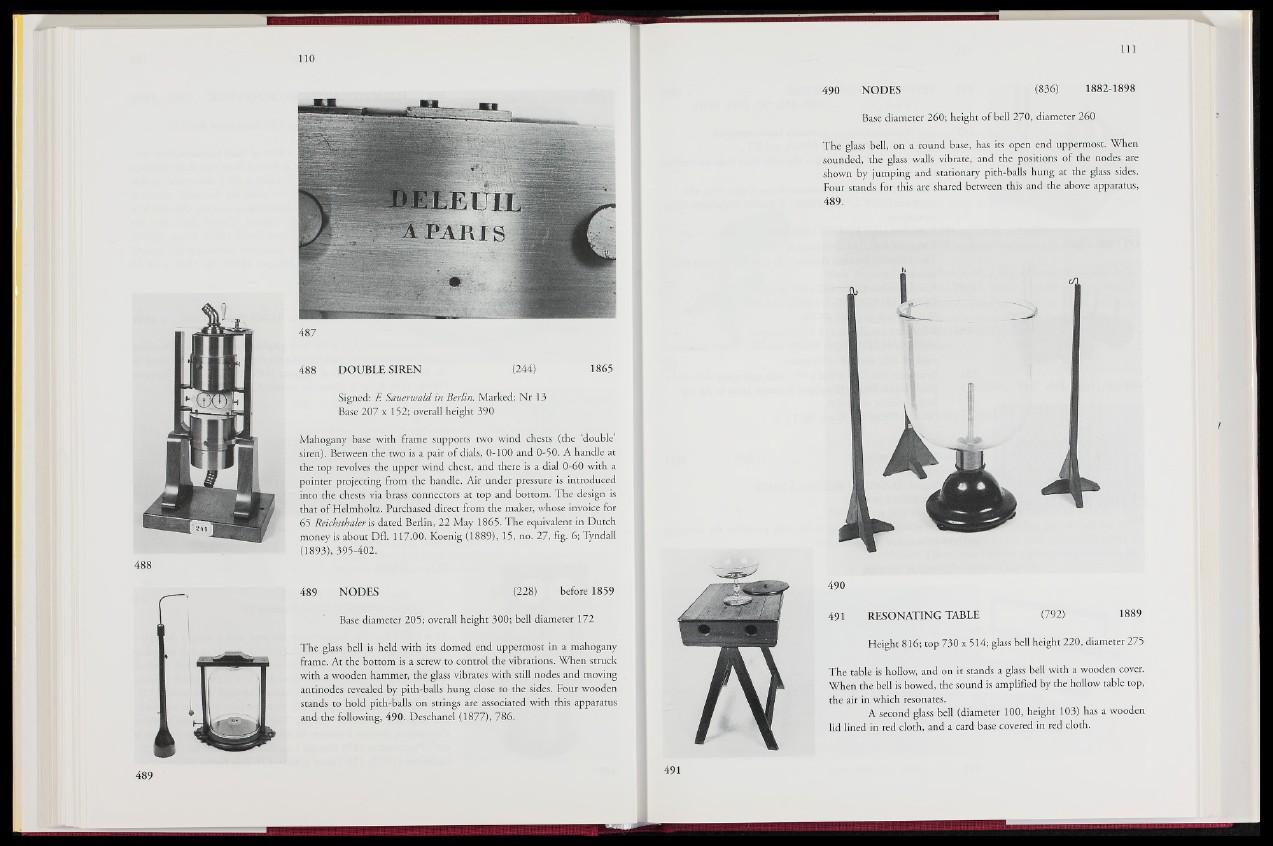
488 DOUBLE SIREN (244) 1865
Signed: F. Sauerwald in Berlin. Marked: Nr 13
Base 207 x 152; overall height 390
Mahogany base with frame supports two wind chests (the ‘double’
siren). Between the two is a pair of dials, 0-100 and 0-50. A handle at
the top revolves the upper wind chest, and there is a dial 0-60 with a
pointer projecting from the handle. Air under pressure is introduced
into the chests via brass connectors at top and bottom. The design is
that of Helmholtz. Purchased direct from the maker, whose invoice for
65 Reichsthaler is dated Berlin, 22 May 1865. The equivalent in Dutch
money is about Dfi.HM.00. Koenig (1889), 15, no. 27, fig. 6; Tyndall
(1893), 395-402.
489 NODES (228) before 1859
Base diameter 205; overall height 300; bell diameter 172
The glass bell is held with its domed end uppermost in a mahogany
frame. At the bottom is a screw to control the vibrations. When struck
with a wooden hammer, the glass vibrates wijK still nodes and moving
antinodes revealed by pith-balls hung close to the sides. Four wooden
stands to hold pith-balls on strings are associated with this apparatus
and the following, 490. Deschanel (1877), 786.
490 NODES (836) 1882-1898
Base diameter 260; height of bell 270, diameter 260
The glass bell, on a round base, has its open end uppermost. When
sounded, the glass walls vibrate, and the positions of the nodes are
shown by jumping and stationary pith-balls hung at the glass sides.
Four stands for this are shared between this and the above apparatus,
489.
490
491 RESONATING TABLE I m SS) 1889
Height 816; top 730 x 514; glass b | | height 220, diameter 275
The table, is hollow, and on it Stands a glass bell with a wooden cover.
When the bell is bowed, the sound is amplified by the hollow table top,
the air in which resonates.
A second glass bell (diameter 100, height 1 0 || has a wooden
lid lined in red cloth, and a card base covered in red cloth.